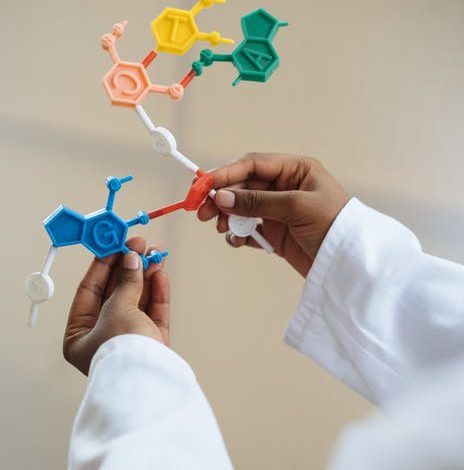mRNA Technology Is a Game Changer. Here’s Why!

The popularity of a researcher sitting in a lab and spilling something onto something else, yelling “Eureka!” and gracing the world with a new life-saving drug belies the truth.
For the most part, the slow development of technology begins decades before the first reports even surface. With mRNA technology, the story is three-plus decades of accumulating a body of data and thinking ahead to practical applications.
You need both for a scientific breakthrough to occur. Especially when dealing with the medical field. It costs a lot of money to produce a drug or treatment protocol and you need people with vision and know-how to bring it about.
The following explores the timeline of mRNA development and the sudden sharp rise in its utility seen today.
Definitions
mRNA – Messenger RNA (ribonucleic acid) is a single helix biomolecule that carries instructions for the construction of proteins
DNA – Deoxyribonucleic acid is the building block of genes and the codes that build cells
Nucleosides – Building blocks of mRNA
Timeline of mRNA Technology
Outside of the medical world, mRNA gets a lot of attention. Researchers and organic chemists talk about it frequently in terms of building blocks for life and its possible role in abiogenesis.
Unlike DNA, which is sometimes seen as one of the most complicated and complex molecules out there, RNA is far simpler and mRNA even simpler than that.
Like any discipline, starting small and building up is the way to go. With technology such as the gene-altering CRISPR all the rage in genetic engineering circles, it should be no surprise that work with mRNA is well understood.
Early Days
The earliest uses of mRNA in bioengineering and medicine started in 1990. Working with mice at the University of Wisconsin, researchers showed the efficacy of custom mRNA in living tissues.
One researcher, Katalin Karikó, then at the University of Pennsylvania, saw further potential in the technology and tried to further develop research. Keeping the RNA free of damage and destruction by the immune system stood as a firm hurdle in these early days.
Triggering an immune response was a two-fold issue. First, if the body attacked the synthetic RNA it was less likely to achieve its primary goal. Second, an immune response creates its own set of issues, depleting resources and weakening already fragile people.
Karikó fought for years to gain funding to back additional research to no avail. The immune response problem thwarted most of the early work in the field. Eventually, Karikó and her colleague Drew Weissman found a synthetic nucleoside that could slip by undetected.
The pair published their findings in 2005, 15 years after the initial mRNA study started the ball rolling.
2007
With demonstrations of the efficacy of mRNA in live tissues and a vector for creating synthetic mRNA that wouldn’t trigger immune responses, the stage was set to make an impact.
Derrick Rossi, a stem cell researcher with a lab at the Harvard Medical School was keen to expand on this bedrock.
For Rossi, stem cells offered a world of revolutionary treatments. Stem cells are hard to get without harvesting embryonic stem cells, a topic rife with controversy in the United States.
With customizable mRNA, Rossi believed that other, less ethically-charged cells could be transformed. It took a few years but by 2010 he demonstrated that such cells could be grown.
Rossi shared his findings with Robert Langer, a biotech entrepreneur. Within six months they had founded the Moderna firm to expand on this technology.
2008
BioNTech was founded the next year by another pair of forward-looking researchers eager to shape the power of mRNA technology. While interested in the expansion of the technology as a whole, they focused more on immunotherapy applications.
2013
Dosage issues hampered research for Moderna and BioNTech as they sought to make effective treatments and novel drugs switch mRNA. Both fell into vaccine development to continue their efforts while seeking approval for mRNA treatments.
New technology comes with a slew of safety concerns that are not easily, or quickly addressed.
2018 – Now
Moderna went public with a high valuation in the market. The public, or at least the investing public, was eager to see what this now 30 years in development technology could do.
Then the COVID-19 pandemic started and the rush for a vaccine shifted safety concerns from possible unknowns to a focus on definitive risks.
The push to use mRNA vaccine technology was a major boon but also the product of hundreds of thousands of hours of study.
The difference between mRNA vaccines and previous vaccines is immense. A vaccine functions by training the immune response. How this process is achieved is key.
With mRNA vaccines, synthetic mRNA teaches a cell to produce specific antibodies by direct coding. A traditional vaccine introduces a weakened, inert virus into the body to be attacked by the immune system.
The Future
Dr. Kenneth Chien hopes to use mRNA-based drugs to combat other diseases, specifically those dealing with rogue proteins. The liver produces many of the body’s proteins and is the target of these developing drugs.
The use of mRNA in developing treatments, immunotherapies, and stem cells has received a lot of attention but safety remains a concern. Data from the pandemic and the vaccine rollouts will be used to apply governmental and academic pressure to facilitate approvals of treatment concepts.
The companies behind these developments enjoyed high valuations before the pandemic and massive cash infusions since. Expect to see more innovations using mRNA technology as the dominos begin to fall.
In the Know
This is a snapshot of the 30 years of mRNA technology development. It shows the beginnings and highlights pioneers that pushed tirelessly for acceptance of their ideas.
For more information on this and other topics, check out other articles on our blog.
Read Also: What Is Atrial Fibrillation Ablation?




